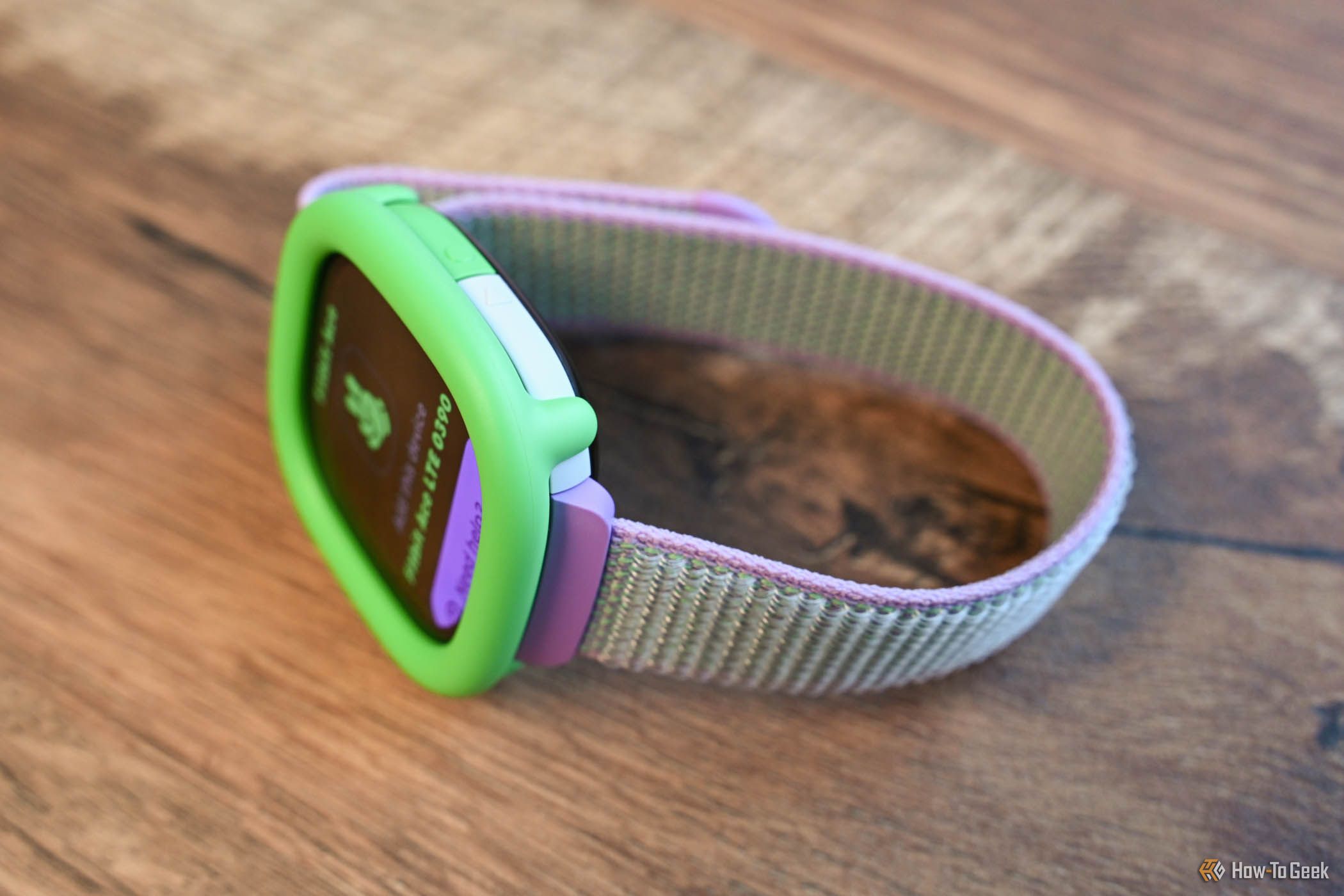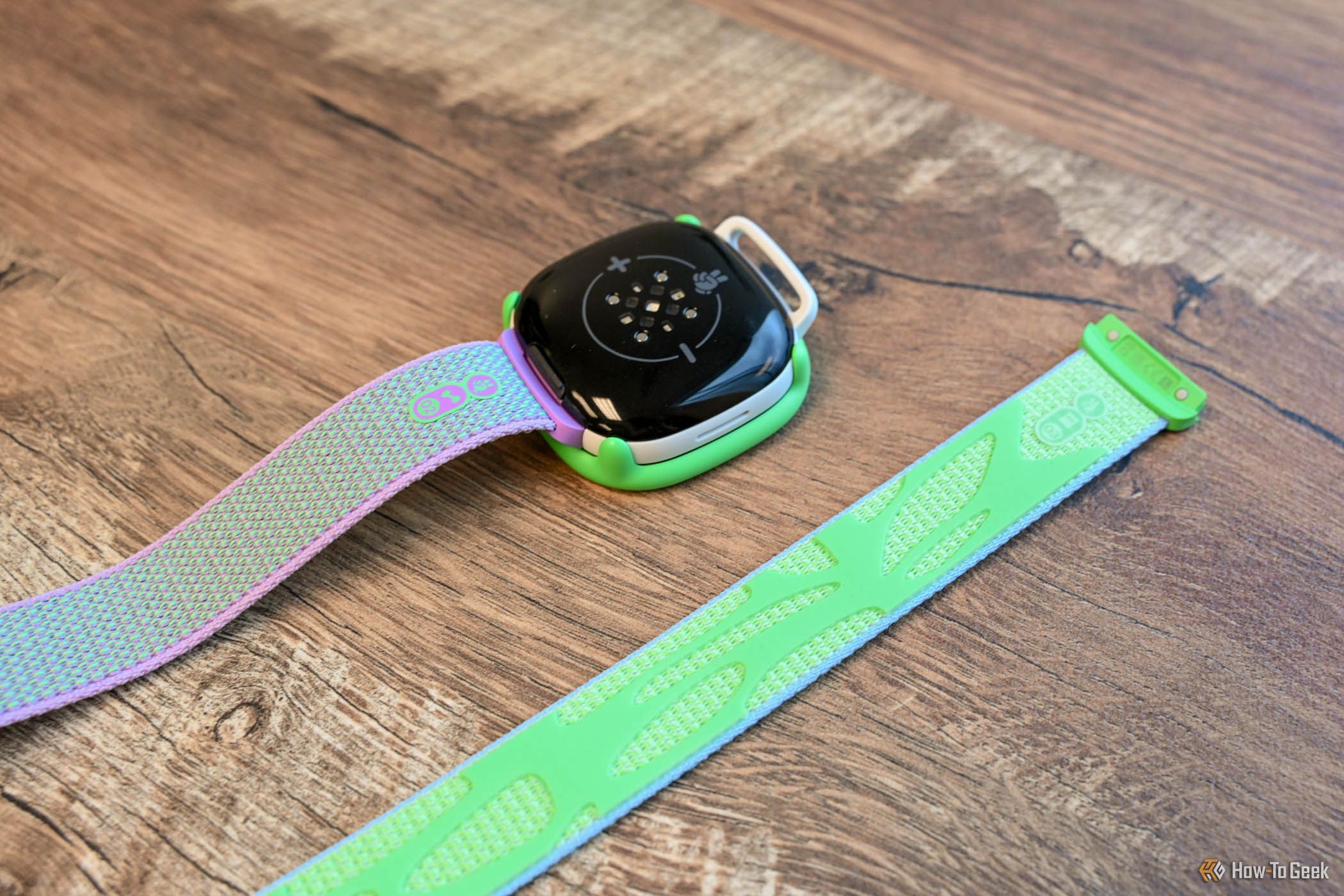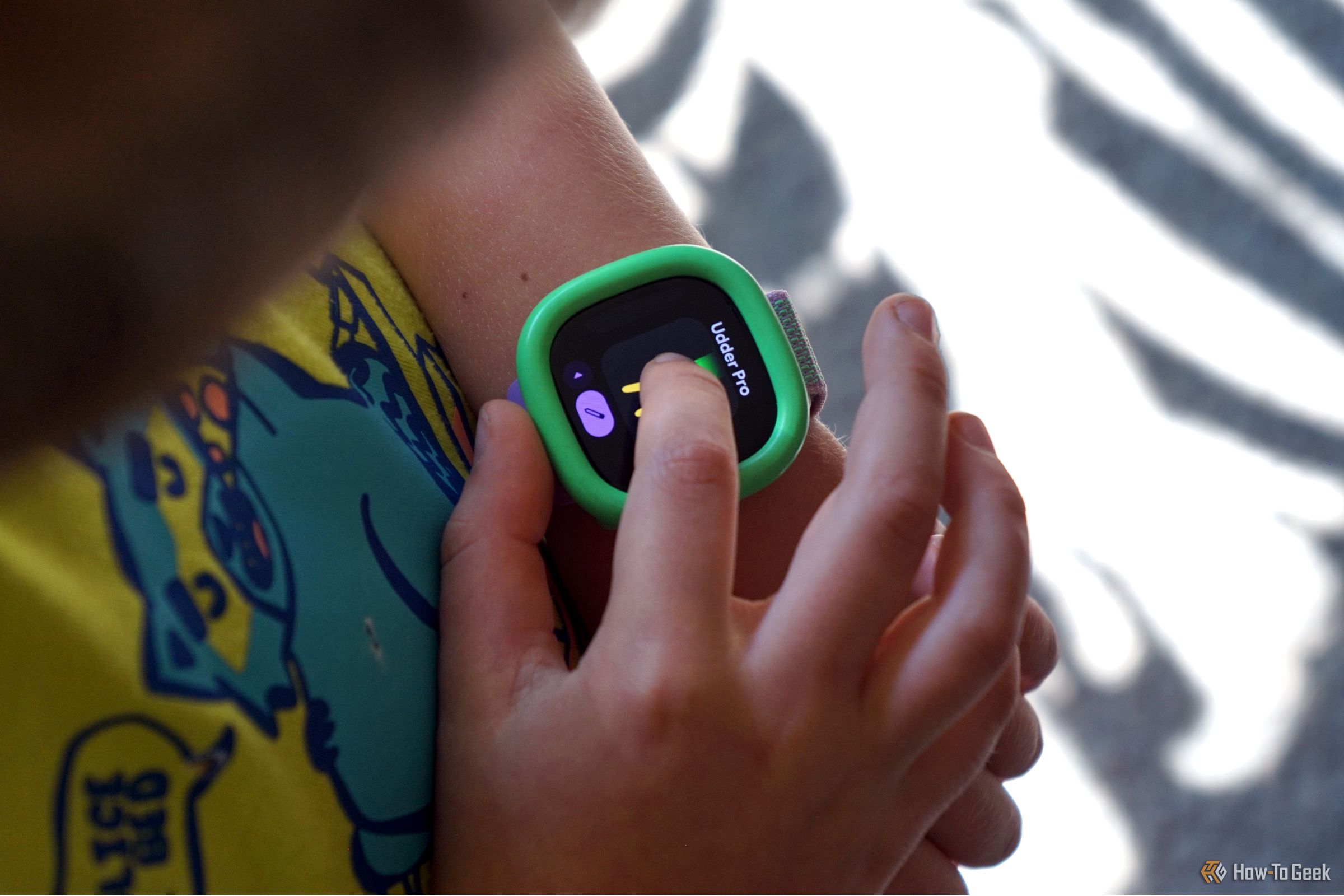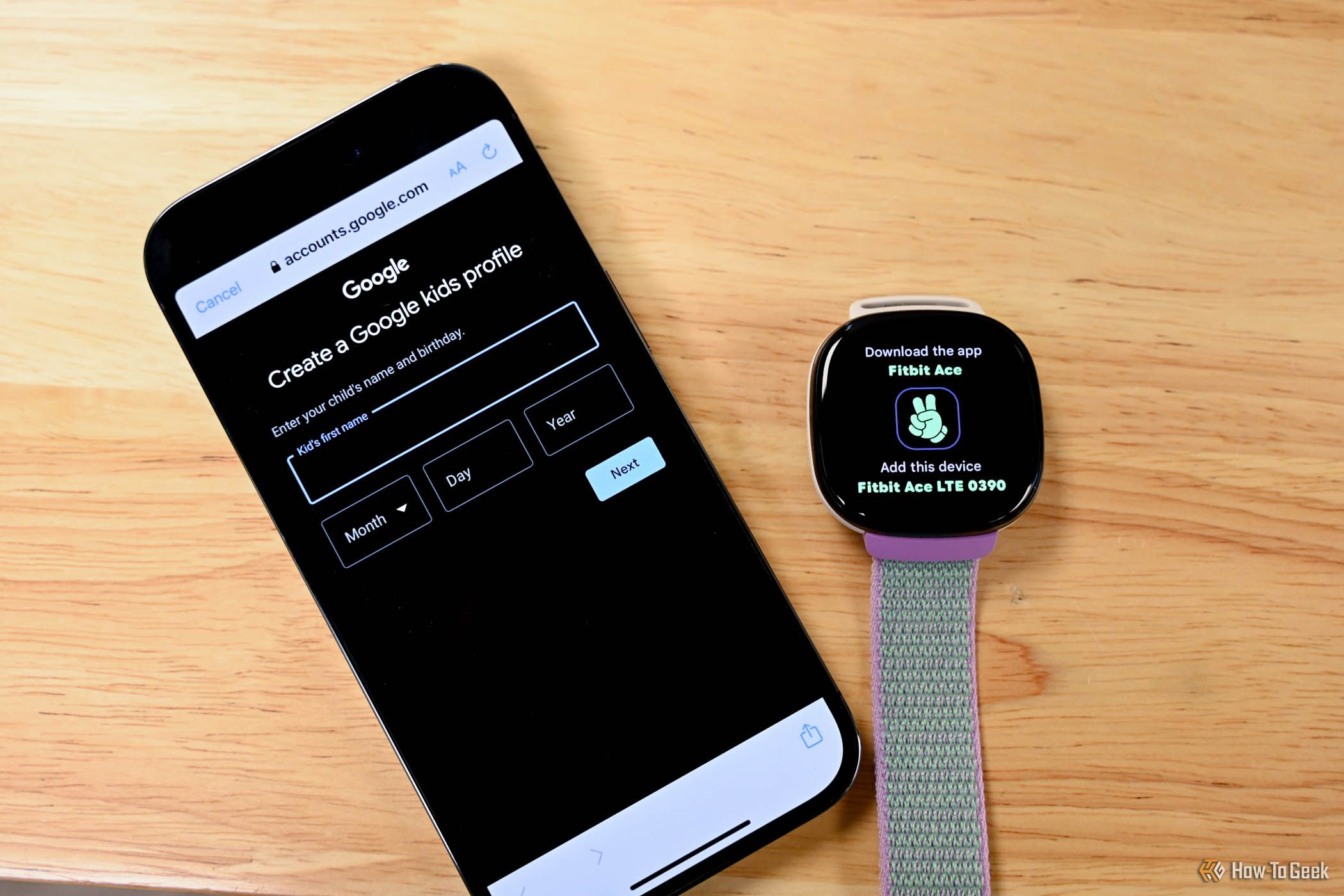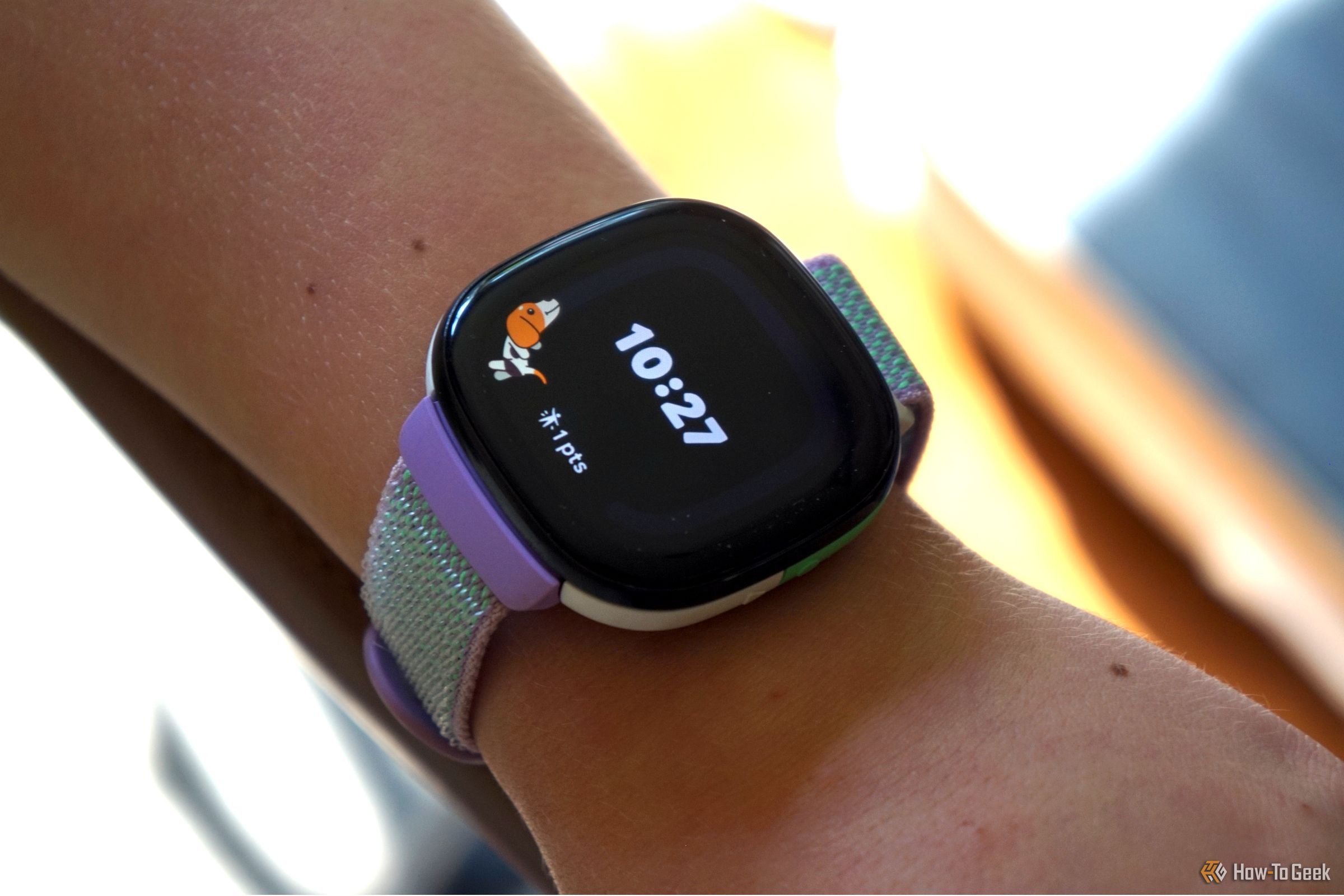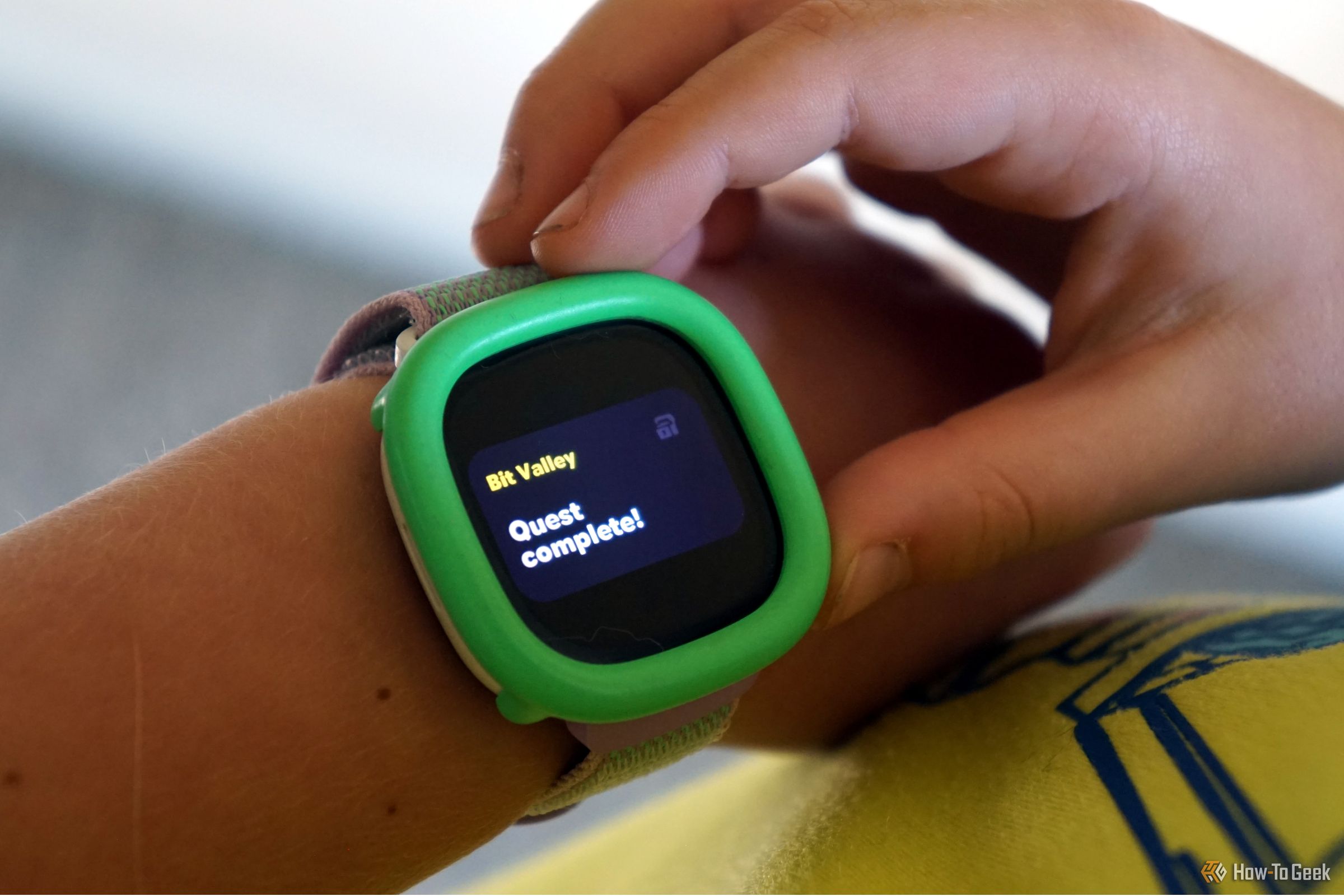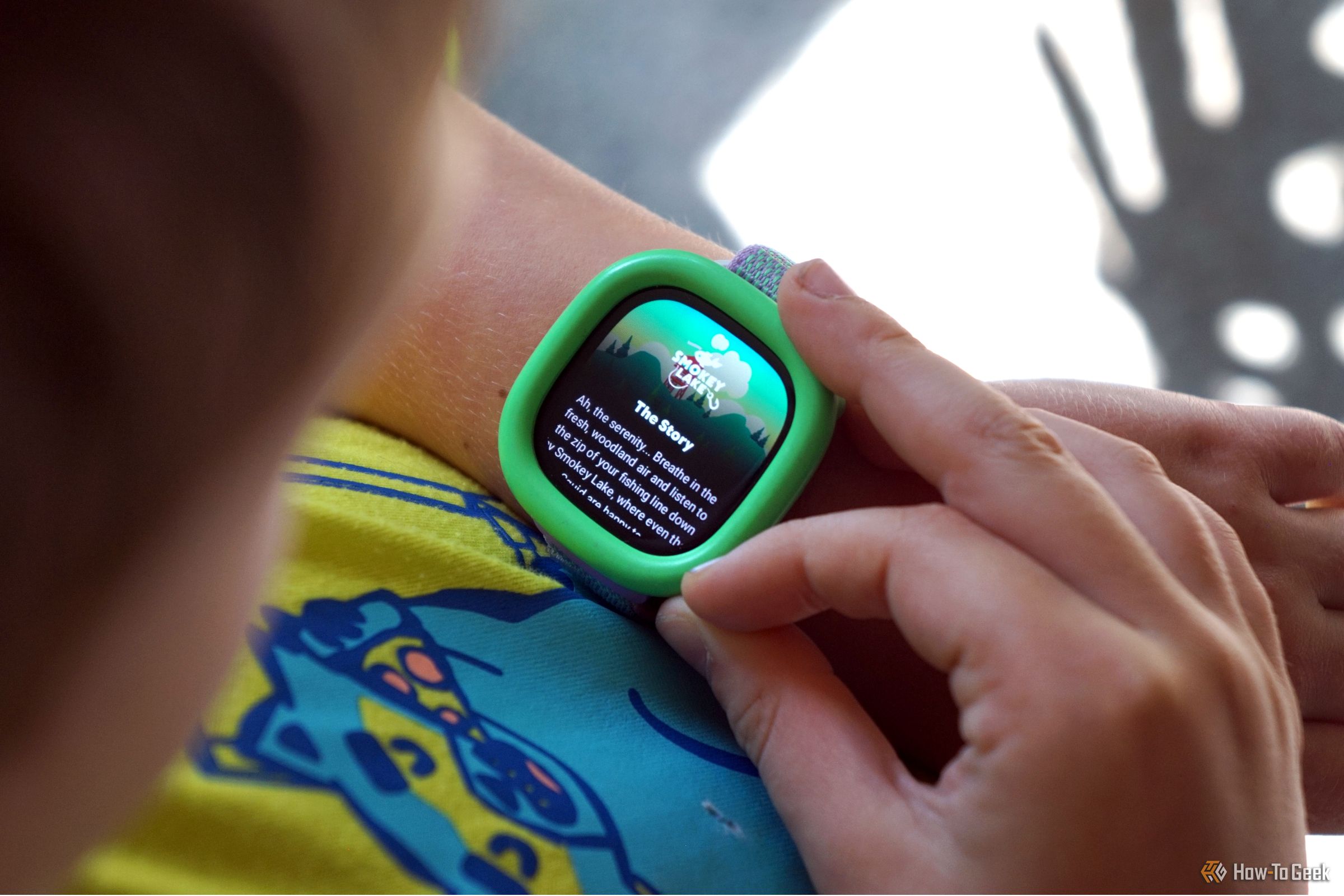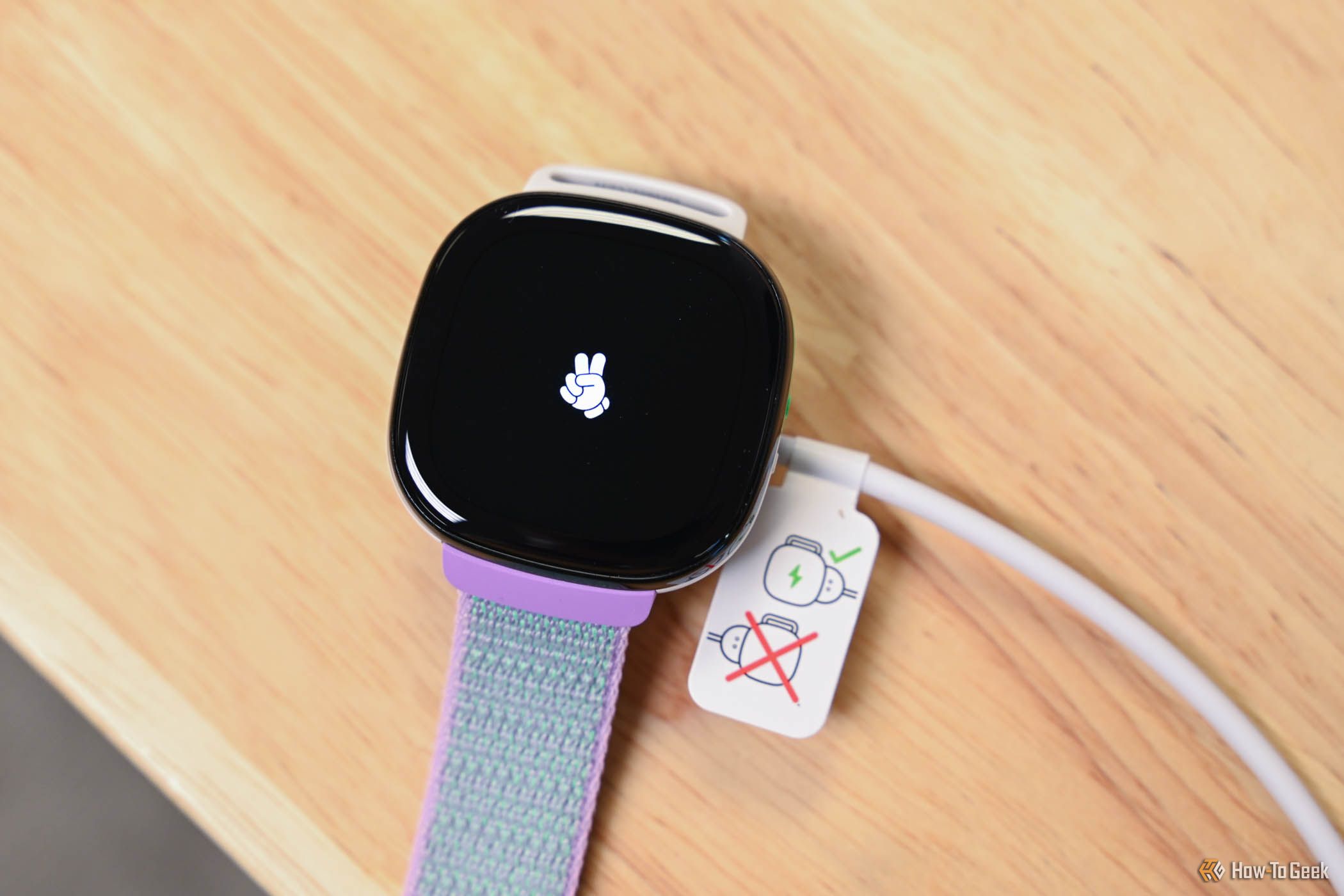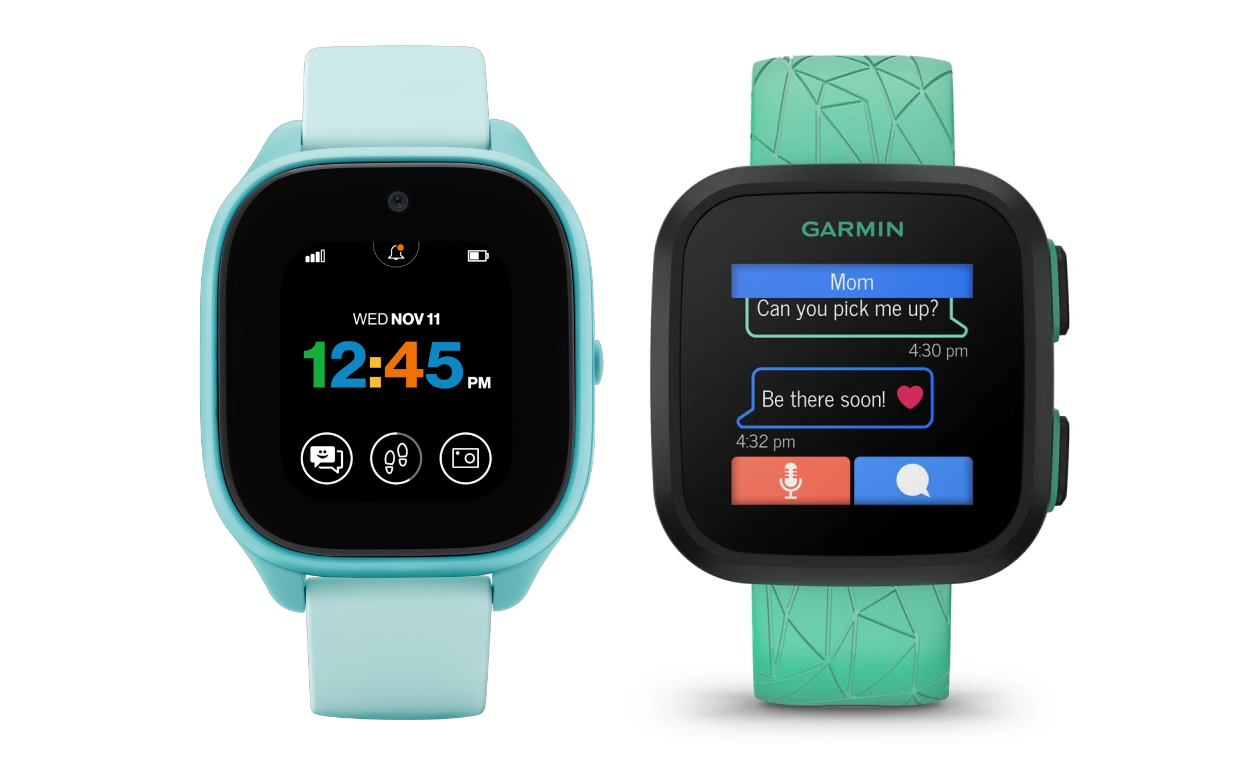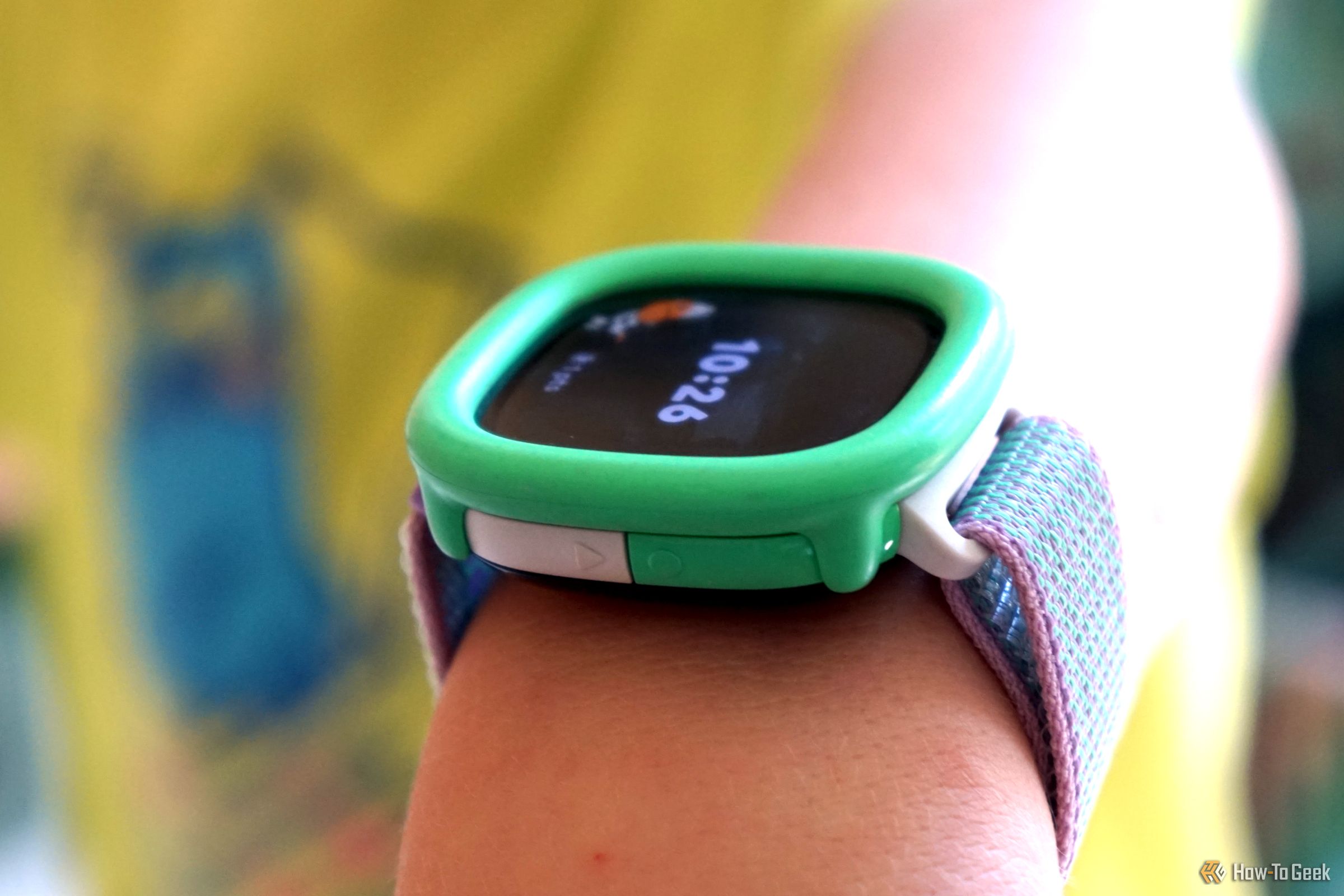Key Takeaways
- The Fitbit Ace LTE is designed with kids in mind, featuring engaging features like customizable characters, movement-based games, and easy-to-use communication tools.
- With GPS tracking, calling, and messaging capabilities, the Ace LTE provides parents with a sense of security and allows for easy communication with their children.
- Despite being designed for kids, the Ace LTE doesn’t compromise on quality. It offers impressive performance, a durable build, and a well-thought-out software experience.
A smartwatch for kids? Is that really necessary? I wouldn’t blame you if that’s your first thought when seeing a product like the Fitbit Ace LTE. However, Google thoroughly convinced me that this is exactly the type of device kids should have. The Ace LTE was built from the ground up with kids in mind, and it shows.
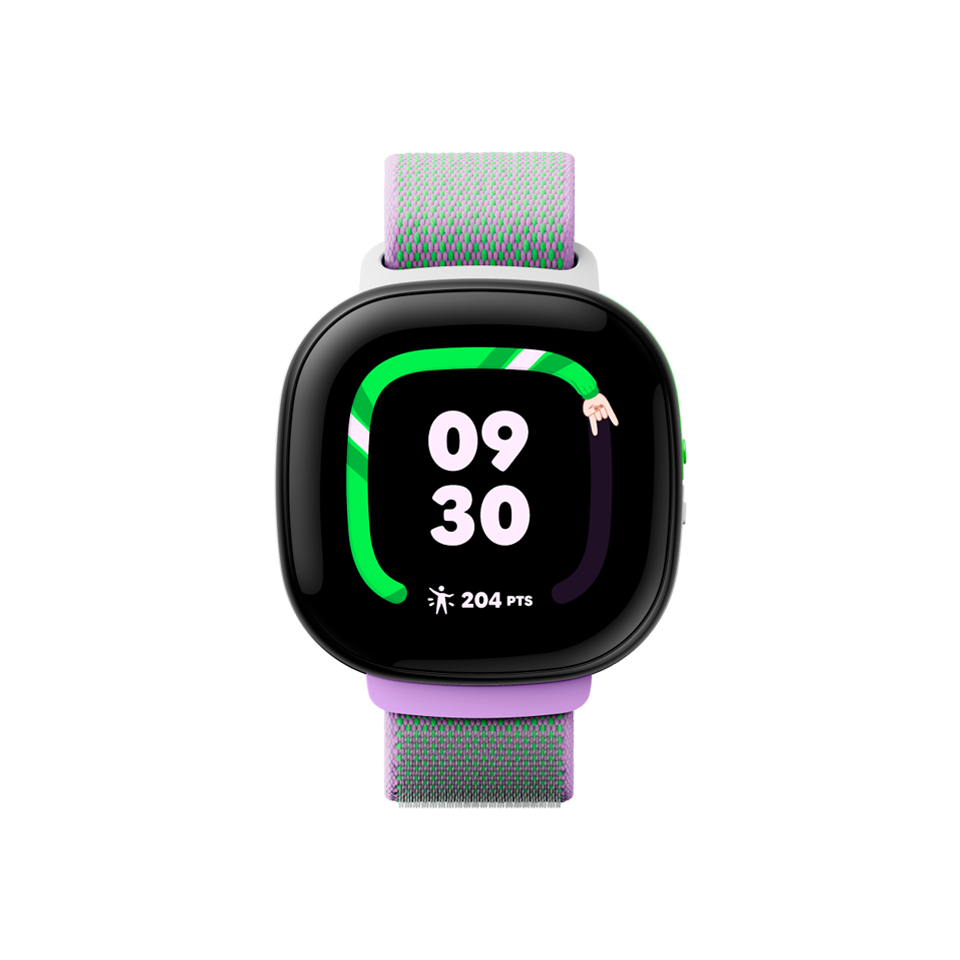
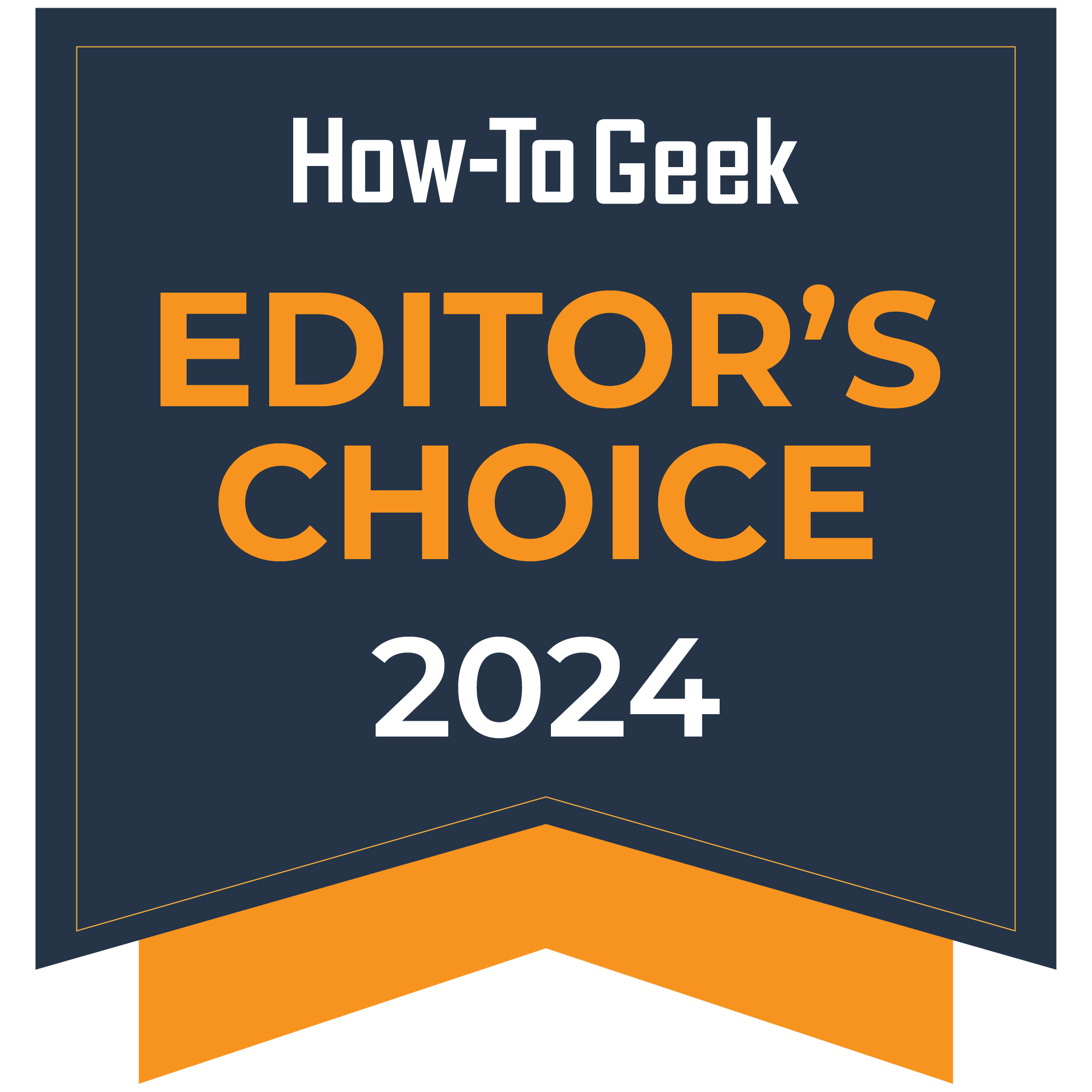
Fitbit Ace LTE
Fitbit Ace LTE is the ultimate kids’ smartwatch with built-in LTE connectivity for calls, texts, and GPS tracking. Encourage active lifestyles, stay connected, and enjoy peace of mind with fun activity challenges and parental controls.
- Excellent software that isn’t dumbed down for kids
- Communication features are intuitive and work very well
- Fitness tracking doesn’t feel like fitness tracking
- Smartly designed to be dressed up or down for wide range of ages
- Just enough fun and games to be engaging but not distracting
- Upfront cost and Ace Pass subscription are pricey
Price and Availability
The Fitbit Ace LTE is available now for $229.95. It comes in two color options: “Spicy” white/lime green and “Mild” charcoal/gray. Both options come with a color-coordinating fabric velcro band. The Ace LTE also requires an Ace Pass subscription for $9.99 per month or $119 annually ($59.98 through August 31, 2024).
Lookin’ Cool, No Matter Your Age
The Fitbit Ace LTE is designed for kids ages 7 and up, and that can be a bit of a design challenge. There’s a big difference between what a 7-year-old and a 14-year-old will think looks “cool.” Google and Fitbit did a great job of creating a device that can appeal to both ends of the age spectrum.
For starters, there are two color options: “Spicy” in white/lime green and “Mild” in charcoal/gray. Google also offers a wide variety of quick-connect bands to choose from. We tested the Spicy model with the default purple fabric band and the green “Spooky Pugs” fabric band. My son really liked the colors, and it was fun for him to swap bands when he wanted to change it up.
The Fitbit Ace LTE comes with a hard plastic protective bumper as well (in bright green or charcoal). The bumper is an essential accessory if your kid is on the younger side. It protects the screen from bumps and scratches while also making the watch look a bit more like a toy. In my testing, the bumper did fall off once, but it has to be bumped pretty hard for that to happen.
You might not realize this is a smartwatch for kids if you saw the Mild version without the bumper. It’s an unassuming rounded square with two buttons on the right side. That’s where I think Google did a great job with the design. The watch can look minimal and “grown-up” or very vibrant and playful, depending on the model and bands your child chooses.
In terms of specifications, the Fitbit Ace LTE is very similar to a Pixel Watch 2 at its core. That’s actually very important for two reasons. One, it’s a $230 device—the specs better be good. But also, many kid-focused products skimp on specs, and the experience suffers for it. There’s none of that with the Fitbit Ace LTE. This is a high-quality device for people of all ages.
Software That Doesn’t Talk Down to Kids
Designing software that needs to appeal to both young kids and tweens might be an even bigger challenge. Lean more toward the younger end, and the older kids feel like they’re using a device “for babies.” Go too far in the opposite direction, and the younger kids might have a hard time figuring it out.
As a parent, I have used my fair share of software designed for kids. Some of it is truly terrible and almost insultingly dumbed down. Thankfully, that was not at all the case with the Fitbit Ace LTE. I was incredibly impressed with the software on the watch and the companion app. You can see glimpses of Google’s Pixel Watch UI here and there—mainly the quick settings and notifications—but it’s mostly a brand-new experience.
The setup process (which requires an iPhone or Android phone to get started) guided my son through creating his “Eejie,” which is almost like a modern-day Giga Pet, but much less needy. The more your kid moves and hits goals, the happier their Eejie will be. It didn’t seem like this was a major part of the experience, though. My son had fun customizing the Eejie but wasn’t super interested beyond that.
The Eejie lives in “Bit Valley,” which can be accessed to the right of the watch face. This is where you can decorate the Eejie’s home with items that are collected and purchased by hitting goals and accomplishing the Daily Quests. Bit Valley was very cute, and my son had fun with this at times, but it wasn’t something he was doing every day.
The thing that my son unquestionably loved the most in our 3+ weeks of testing was calling and messaging. Pressing the top button on the side of the watch takes your kid to the Contacts page. From here, they can very easily tap on a contact and then type a message, choose a stock text message, send an emoji, make a phone call, or record a voice message.
I cannot adequately explain how many poop emojis I received from my son. So much poop. And you know what? I absolutely loved it, and my son loved it even more. He is actually younger than the recommended age bracket, yet he had no trouble at all using the various communication methods. Emoji was the clear favorite, followed closely by voice messages. A lot of the time we were just sending silly stuff back and forth, but it was genuinely useful at times as well.
On the phone side of the conversation, everything happens through the Fitbit Ace companion app for Android and iPhone. That includes phone calls as well. The watch has a data plan, but it doesn’t have a phone number. I really can’t say enough about how well the communication features worked. However, I found myself wishing for two things. I would love to be able to customize the nine emojis and the handful of stock text messages. Also, you can’t send voice messages in return from your phone—that would be nice.
Another thing that I’ve seen other people complain about is the inability of a Fitbit Ace LTE to communicate with another Ace LTE. The watch can only communicate with contacts who have the Ace app on their smartphone. So, for example, if you had two kids with Ace LTE watches, they’d have no way to talk to each other. Seems like a missed opportunity.
Honestly, I can’t say enough about the Fitbit Ace LTE’s software experience. I’ve heard so many companies say things like, “We designed it from the ground up,” and “We really went back to the drawing board,” etc. Google wasn’t lying. This is a genuinely well-thought-out, intuitive, attractive, and functional OS—not just an interface—for young kids and tweens.
Activity Tracking Puts Play at the Forefront
Like any modern smartwatch, health and fitness is a big part of the Fitbit Ace LTE. However, the approach is vastly different than what you would find on a smartwatch or fitness tracker for adults.
Your child’s activity is measured in “Move Points.” The Move Points are intentionally abstract—it’s about movement, not just getting a certain number of steps. The Move Points go toward a daily “Move Goal,” which is illustrated as a character “Doodle” on the watch face.
The Doodle is a similar concept to activity rings on an Apple Watch, but it’s an animated character. There’s a cat, dog, squid tentacle, snake, cow, and several others to choose from. The Doodle makes its way around the watch face as Move Points are earned, and when the Move Goal is reached, a fun animation happens. My son enjoyed choosing a different Doodle every day, and he would get excited when he reached the goal. It was very effective.
Beyond the Doodle, there are Daily Quests and the Fitbit Arcade, which also motivate your kid to get up and move. Daily Quests appear each morning, and they can be accessed to the left of the watch face. These are things like reminders for the Move Goal, suggestions for things to do in games, and even little tips on how to use the watch.
Speaking of games, the second button on the side of the Ace LTE launches the Fitbit Arcade. There are six games available at launch, and they’re all movement-based in some capacity. My son’s favorite game was “Smokey Lake,” where you need to physically move around to find fish, swing your arm to cast the fishing pole and unlock bait by taking steps. The other games didn’t interest my son much, but that’s probably due to his young age.
This is a good place to mention the “School Time” settings. In a similar vein as Do Not Disturb mode on a phone, adults can set hours during which games are disabled and notifications are silenced. Calls can’t be made to the watch while in “School Time,” but the child is free to make calls, and text messaging still works from both sides.
Over on the companion phone app, you can see the number of steps, movement time, and active time. Overall, I think the Ace LTE does just enough to encourage activity without making a big deal about it. Whether my son was dancing after beating Donkey Kong or running around playing tag, he was earning points for being up and moving. That’s the important thing.
Fitbit Ace Pass
As mentioned at the top, part of the Fitbit Ace LTE experience is the Ace Pass subscription. Ace Pass costs $9.99 per month or $119 per year ($59.98 through August 31, 2024). This is a required subscription—you can’t set up the watch without it.
Subscription fatigue is a very real thing, and I completely understand if you immediately rolled your eyes upon reading that this device requires one. I’m not going to argue it’s inexpensive, but I think the Ace Pass is pretty reasonable once you realize what it does and, maybe more importantly, what it saves you from doing.
The Ace Pass is what enables the Fitbit Ace LTE to have a 4G LTE data connection (presumably on Google Fi). This is critically important for the calling, messaging, and GPS location tracking to work wherever your kid may be. Ultimately, I think these are the killer features of the watch. Paying $10 (or less) per month for all that and being able to avoid the hassle of dealing with your cellular provider is well worth it, in my opinion.
Battery Life That Can Keep Up With Kids
The Fitbit Ace LTE is one of the rare devices I’ve tested where the battery life claims are undervalued. Google says it will get “16+ hours of battery,” which doesn’t sound promising, but we very easily made it through a day with more than 50% remaining. In fact, sometimes I worried I might be overcharging the watch since it still had plenty of juice left at bedtime.
Of course, it all depends on how your kid uses the watch. Phone calls and games will use up the battery the quickest. Messaging and activity tracking don’t have a huge impact. Also, it doesn’t seem possible to make the display stay on at all times, which helps battery life as well.
Speaking of charging, the Ace LTE uses the same four-pin magnetic puck charger as the Pixel 2. It can charge the 328mAh battery from 0-60% in 30 minutes and 100% in 70 minutes.
The Competition
There’s not a huge market for kids-focused smartwatches. The two biggest competitors for the Fitbit Ace LTE seem to be Verizon’s Gizmo Watch 3 and the Garmin Bounce.
The Gizmo Watch has the obvious disadvantage of being tied to Verizon. That being said, it supports calls and text, video calling, location tracking, activity tracking, and some very basic games. The $10 Unlimited Plan is similar to the Ace Pass. Overall, it seems like a competent device, but not as well designed as the Ace LTE.
The Garmin Bounce is more limited than the Ace LTE and Gizmo Watch. It supports text and voice messaging but not calls. However, it does have location tracking, activity tracking, a few simple games, and some other common features. Garmin’s subscription is similar to Fitbit as well, costing $9.99 per month for LTE connectivity without dealing with carriers. The lack of calling is a big drawback for the Bounce.
Both the Gizmo Watch and Garmin Bounce cost $150, which is a solid $80 cheaper than the Ace LTE. If you’re already a Verizon customer, the Gizmo Watch looks like a decent alternative. It definitely doesn’t seem as fun or “cool” as the Ace LTE, but the features stack up. The best thing going for the Bounce is it’s cheaper, but that’s about it.
Should You Buy the Fitbit Ace LTE?
Technology is a big part of my life, but I’m certainly not anxious to give my son a smartphone. If I’m being honest, I don’t even love that he has a tablet. But my experience with the Fitbit Ace LTE has been overwhelmingly positive. This is a gadget that I not only allow my son to use but encourage him to use. It’s a beneficial addition to our lives.
The elephant in the room is the price. When I talked to other parents, they were always very impressed and on board until I mentioned the $230 price tag with a subscription on top. As mentioned, it’s substantially more expensive than other kids’ watches, but the Ace LTE is much closer to being a full-fledged smartwatch than those other watches.
“You get what you pay for” is not always true—just look to Google’s other smartwatch, the Pixel Watch, as an example. However, I stand by it in the case of the Fitbit Ace LTE. Yes, it’s expensive, but I was thoroughly impressed with the quality. It’s well-made, well-designed, and well-thought-out.
This is a product for kids that doesn’t talk down to them or cut corners because it’s “just for kids.” That’s what’s so important if you want to get your kid something that they will actually want to use and continue to use for a long time. At the end of the day, the biggest compliment I can give is I’m very sad to be done reviewing the Fitbit Ace LTE. I had so much fun with it, and I don’t want to give it back.


Fitbit Ace LTE
Fitbit Ace LTE is the ultimate kids’ smartwatch with built-in LTE connectivity for calls, texts, and GPS tracking. Encourage active lifestyles, stay connected, and enjoy peace of mind with fun activity challenges and parental controls.


